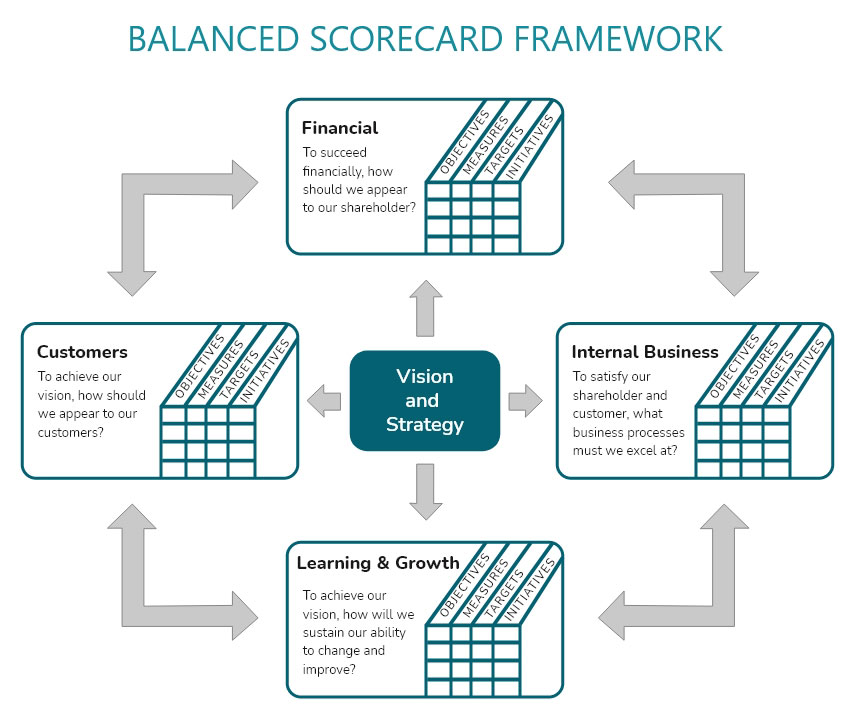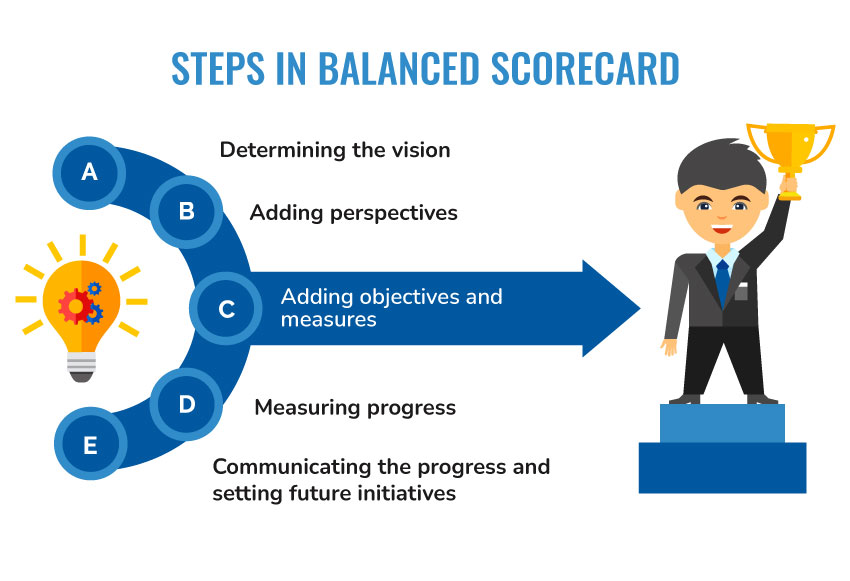Table of Content
Introduction to Balanced Scorecard
The Balanced Scorecard is a strategic planning and management system that helps the organization evaluate its business activities against its strategic plans. The Balanced Scorecard helps the organizations to identify and improve the internal operations of the organizations which further helps to drive the external outcomes. The Balanced Scorecard can also be defined as the management system which is aimed at translating the strategic goals of the organization into a set of performance objectives to effectively measure, monitor, and manage the organization’s performance. The key outcome of the Balanced Scorecard is the achievement of the strategic goals of the organization by keeping the organization’s performance on track. The Balanced Scorecard is developed to provide a comprehensive view of the organization’s performance in view of the strategic goals and additional metrics that can help to gauge the organization’s performance. The four perspectives of the Balanced Scorecard include financial, customer, internal, and learning and growth perspectives.

- The financial analysis considers the analysis of the financial performance of the organization by analyzing the operating income, profitability, ROI, etc.
- The customer analysis looks at customer satisfaction and retention in the organization.
- The internal analysis in the organization looks at the internal processes of the organization and their alignment to the strategic goals.
- The learning and growth perspective helps to assess the rate of employee satisfaction, retention, and information systems.
The need for a Balanced Scorecard
The Balanced Scorecard is one of the powerful models that helps to provide accurate measurement of the overall performance of the organization by analyzing the performance against the established goals. It also provides a balanced view of the overall performance of the organization which then helps to determine and plan strategic actions for improving resource allocation. The main reasons for use of the Balanced Scorecard are recited as follows-
- The organization can also use the Balanced Scorecard as the medium of communication within the organization as the specific goals identified in the Balanced Scorecard can be communicated throughout the organization and can also be branched to specific individuals or departments to provide a clear picture of the organization performance.
- The Balanced Scorecard also helps in strategic planning in the organization by developing cause and effect relationships between the strategic objectives and identifying gaps in the organization’s performance.
- The use of a Balanced Scorecard also helps the organization to design the key performance indicators and improve the future performance outcomes of the organization by considering the actions to be taken.
How to prepare a Balanced Scorecard?

The organizations can use the Balanced Scorecard by going around the following steps-
- Determining the vision- The first step in the development of the Balanced Scorecard is determining the organizational vision that bases the overall goals and objectives of the organization.
- Adding perspectives- To create a Balanced Scorecard, the four different perspectives are considered as the Balanced Scorecard measures the organization’s performance from four different perspectives which include financial, customer, internal business process, and learning and growth.
- Adding objectives and measures- The key measure that needs to be taken while preparing the Balanced Scorecard is defining the key objectives, measures, targets and initiatives to be taken. The business objectives are defined for each perspective and then the measures include the KPIs that can help to assess the organization’s performance against each objective. After defining the organization’s performance targets, the initiatives to achieve the set objectives can be defined.
- Measuring progress- After defining the organization’s objectives and targets, the overall performance can be measured. Also, the organization can establish interconnection between all four perspectives to better achieve the organization’s objectives.
- Communicating the progress and setting future initiatives- The organization can use the Balanced Scorecard to communicate the overall performance of the organization among the employees. The Balanced Scorecard can then help to exemplify how the organization’s short-term initiatives can help to achieve the long-term strategic objectives of the company.
Balanced Scorecard real example
To cite an example, Adidas Balanced Scorecard is presented as follows to provide you with a deeper insight into the strategic performance of Adidas and to help you determine how a Balanced Scorecard can help Adidas to improve its future performance.
| Vision – “ To be the design leaders in the sporting goods industry by getting the best out of the athletes through performance guaranteed products.” | ||||
| Perspective | Business objectives | Measures | Targets | Initiatives |
|---|---|---|---|---|
| Financial | To increase business sales and profitability |
|
|
Finance management and improving the accounting system |
| Customer | To ensure higher customer satisfaction | Customer satisfaction rate | Increase customer satisfaction rate by 5 % |
|
| Internal process |
|
|
|
|
| Learning and growth |
|
|
|
|
The above-Balanced Scorecard of Adidas shows that Adidas needs to implement various initiatives such as technological advancement, training plans for employees, product expansion, improvement to the accounting system, etc. to improve the overall performance of the organization. The implementation of all these initiatives will not only help to achieve the short term objectives of the organization but will also contribute to the achievement of the long term goals and vision of Adidas which is to be a leader in the sports goods industry by offering high quality and guaranteed performance products to the athletes.